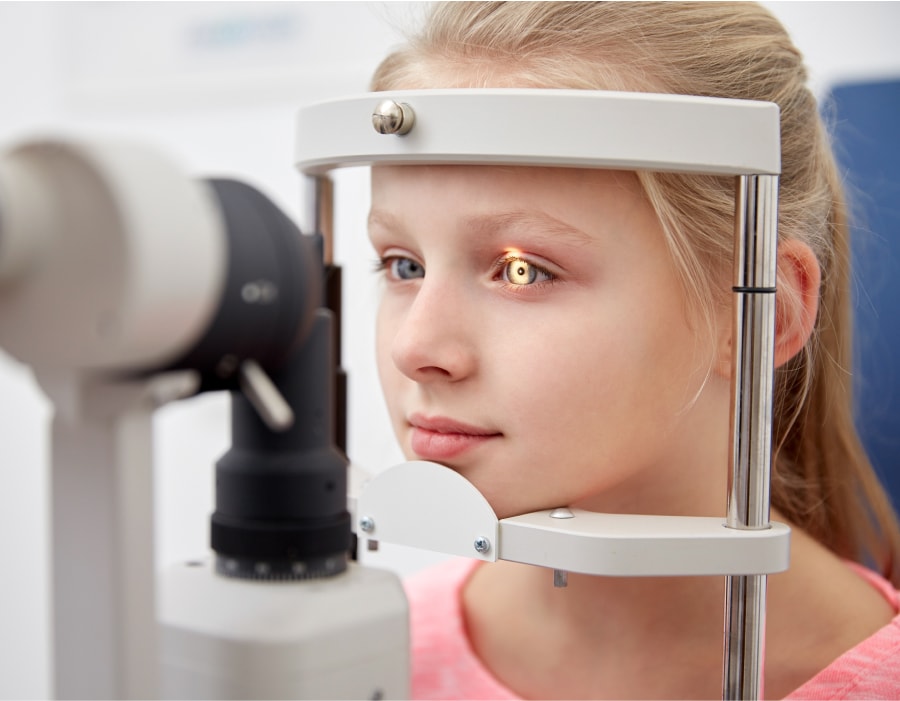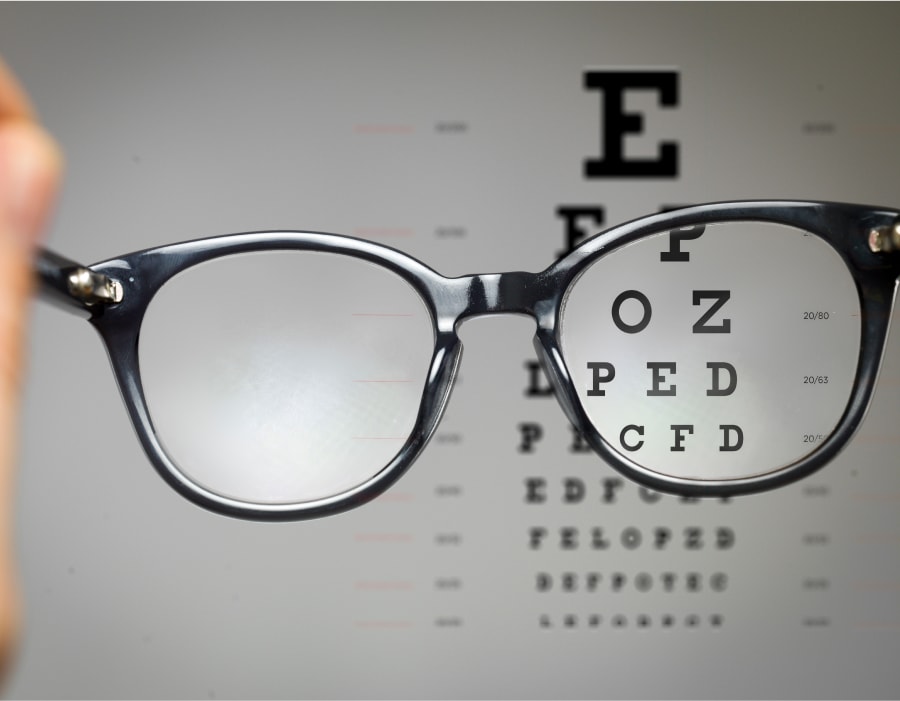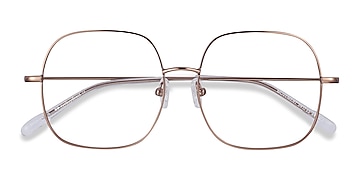Visual clarity affects everything from reading signs to driving safely. If you’ve been told you have 20/40 vision, it‘s important to know what that means, how it compares to standard vision, and what steps you can take to improve it.
Understanding 20/40 Vision
20/40 vision is a common diagnosis during eye exams. Before diving into its causes or implications, it helps to clearly define what this measurement means.

Definition and Explanation
Visual acuity reflects the clarity and sharpness of your vision and is a key aspect of eye health, often evaluated using the Snellen chart. This chart, used during eye exams, features rows of progressively smaller letters. The concept of 20/40 vision originates from this chart and compares your vision to normal vision standards.
Having 20/40 vision means you must stand 20 feet away to see clearly what a person with normal vision can see from 40 feet. Visual acuity ranges from perfect vision (20/20) to various levels of impairment. The Snellen chart is crucial in assessing your distance vision capabilities.
Understanding your visual acuity is important, especially if corrective measures like glasses or contact lenses are needed. For those with 20/40 vision, eyewear significantly enhances clarity, making daily activities easier. To learn more about your vision, consider scheduling an eye exam with an optometrist.
Comparing 20/40 Vision to 20/20 Vision
To better understand the significance of 20/40 vision, it’s helpful to compare it to the standard benchmark: 20/20 vision.
Understanding the Differences
Vision classifications, such as 20/40 and 20/20, indicate how sharply you can see. “20/20 vision” signifies clear sight at 20 feet, considered normal. Conversely, “20/40 vision” means you need to be 20 feet away to see what someone with normal vision perceives at 40 feet, affecting daily life.
With 20/40 vision, tasks like reading road signs while driving or identifying distant details can be challenging, especially at night or in poor weather conditions. You might also need to sit closer to read or watch TV.
Comprehending these differences helps determine the need for glasses or contacts. Regular eye exams ensure you have the correct prescription.

Causes and Implications of 20/40 Vision
The causes behind 20/40 vision play a key role in how it’s managed. Learning what affects your eyesight early on reinforces the value of eye exams.
Common Causes
Myopia, or nearsightedness, is a frequent cause of 20/40 vision, occurring when the eye shape causes light to focus in front of the retina, blurring distant objects. Astigmatism, another cause, results from an irregularly shaped cornea or lens, leading to blurred vision at all distances.
Daily Life Impact
20/40 vision can complicate tasks that require clear distance vision. Driving becomes more difficult, particularly at night or in adverse weather. You may need to concentrate more to read road signs or traffic lights from a distance. Reading might also require holding books closer or using brighter light. Fortunately, glasses or contact lenses can significantly improve vision, easing these tasks.
Corrective Measures for 20/40 Vision
20/40 vision can often be corrected. A range of effective solutions can bring your vision closer to 20/20 clarity.

Eyewear Solutions
Corrective lenses can greatly enhance sight for those with 20/40 vision. Glasses and contact lenses are popular solutions. Glasses are user-friendly and cater to any style, effectively improving vision without eye contact. Contact lenses deliver a natural view and suit active lifestyles, as they rest on the eye, providing an unobstructed view. Both options can be customized to meet personal needs, ensuring suitable solutions for everyone.
Eye Exams and Prescriptions
Regular eye exams are essential for maintaining eye health and ensuring your prescription is accurate. These exams evaluate your vision and overall eye health, identifying potential issues early on. Understanding your prescription is crucial as it offers precise measurements for vision correction. Keeping up with routine eye exams guarantees that your glasses or contacts provide optimal vision, helping to preserve eye health and prevent vision deterioration.
Can You Drive with 20/40 Vision?
Driving involves responsibilities, including meeting specific vision standards. If you have 20/40 vision, you might question whether you’re legally permitted to drive and how to maintain road safety. Let’s explore the regulations and safety tips for individuals with 20/40 vision.
Legal Requirements
Driving vision requirements vary by region, ensuring drivers possess sufficient vision for safe driving. In the United States, most states require a minimum of 20/40 vision in one eye, with or without glasses, for an unrestricted license. Generally, those with 20/40 vision can drive legally, but checking local regulations is advisable.
If your vision is under 20/40, you might still drive with restrictions, such as daytime driving only or wearing glasses. Consult your Department of Motor Vehicles (DMV) to understand the applicable rules and limitations.
Safety Recommendations
Even with legal driving status, additional caution is necessary with 20/40 vision. Consider these safety tips:
- Regular eye exams – Regularly visit an eye doctor to check your vision and update your glasses if necessary, ensuring sharp vision for driving.
- Use corrective lenses – Always wear prescribed glasses or contacts, and ensure they are clean and unscratched.
- Avoid night driving – Minimize driving at night or in low light since 20/40 vision may impair night visibility.
- Stay alert – Be attentive to signs, signals, and other vehicles to compensate for any vision challenges.
- Adjust your mirrors – Correctly position side and rearview mirrors to reduce blind spots.
- Keep your windshield clean – A clean windshield reduces glare and enhances visibility, particularly in adverse weather.
Following these tips helps drivers with 20/40 vision remain safe and confident on the road. Remember, clear vision is essential for safe driving, so take measures to optimize your sight.
Enhancing Your Vision with Eyewear
Selecting the appropriate eyewear enhances both vision and style. Whether choosing glasses or contact lenses, the right choice can make a significant impact.
Choosing the Right Glasses
Choose glasses that match your style and daily needs. For active individuals, consider durable frames. If you spend significant time on screens, explore blue light lenses. Also, think about your face shape. Round frames can soften sharp features. Square frames, on the other hand, highlight round faces. The ideal glasses boost both confidence and comfort, and Eyebuydirect has thousands of options for every style and need.
The Role of Optometrists
Consulting an eye doctor is essential. Optometrists assess vision and recommend optimal solutions. Working with an optometrist ensures your eyewear improves vision and supports eye health.






